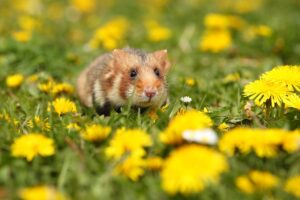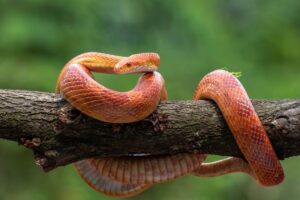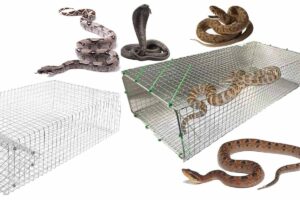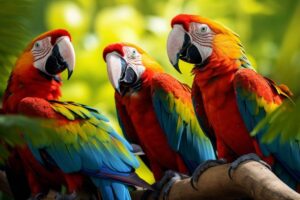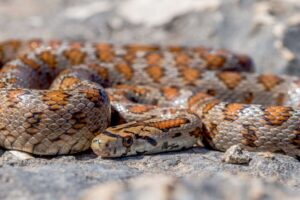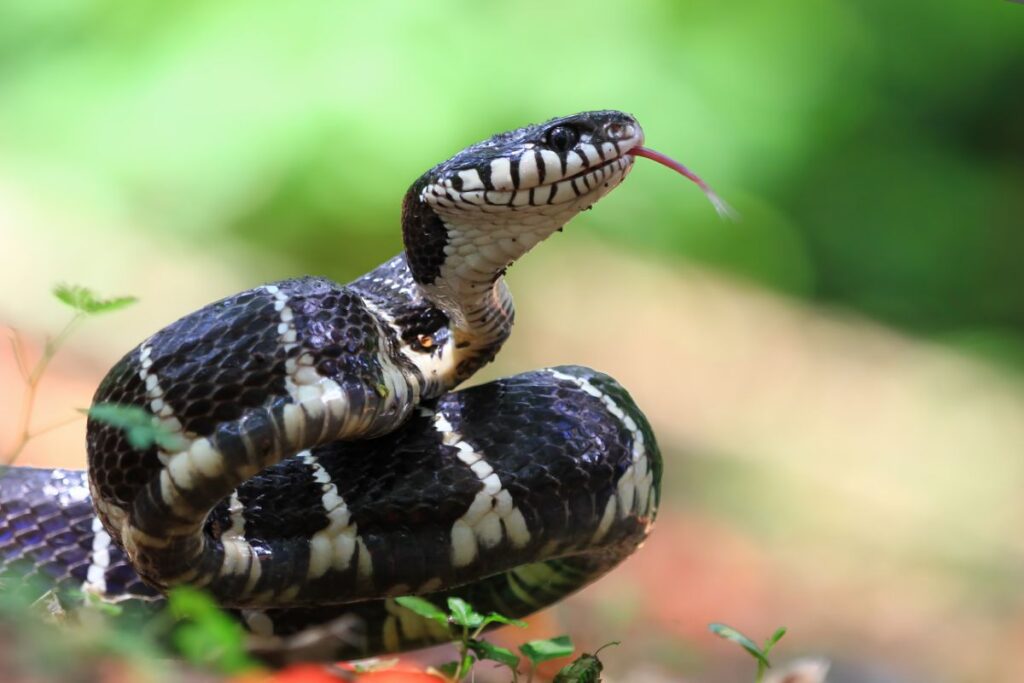The Ryukin Goldfish, a striking variant of the common Goldfish, is celebrated for its distinctive, rounded body, humped back, and flowing fins. Its vibrant colors span from deep reds to delicate whites, making it popular among aquarists. Unlike other Goldfish, the Ryukin boasts a more compact frame, and its long, trailing fins create a majestic display in aquariums.
| Attribute | Details |
|---|---|
| Scientific Name | Carassius auratus (no particular specific name) |
| Size | Small: 4.7 cm |
| Medium: 7.1 – 9 cm | |
| Large: 9.1 – 12 cm | |
| Jumbo: 12+ cm | |
| Life Expectancy | 7 years |
| Temperament | Passive and gregarious |
| Diet | Omnivorous but thrives best on a high-protein diet |
| Tank Size | 25 gallons for each fish |
| Tank Temperature | 28℃ – 30℃ (82.4℉ – 86℉) |
| Water Hardness | 5 – 19 dGH |
Significance in Aquaculture
Due to their aesthetic appeal and adaptability, Ryukin Goldfish holds a special place in aquaculture. Though bred primarily for ornamental purposes, they represent a culmination of selective breeding that showcases the beauty of goldfish species. Ryukins are often seen as a symbol of prosperity in various cultures, further elevating their status among collectors and enthusiasts.
Purpose of the Guide
This guide seeks to provide overarching insights into the care and maintenance of Ryukin Goldfish. From understanding their origins and physical traits to creating the ideal habitat and managing their health, this article is an essential resource for novice and experienced aquarists.
Understanding Ryukin Goldfish
Origin and History
Ryukin Goldfish trace their origins back to Japan, where they were developed through the selective breeding of Chinese Fantail Goldfish. Over centuries, breeders emphasized the fish’s characteristic high dorsal hump and elegant fins, resulting in the Ryukin we recognize today. This breed first gained popularity in the late Edo and has since become a staple in aquariums worldwide.
Physical Characteristics
Ryukin Goldfish are defined by their tall, arching back, significantly higher than most other Goldfish. Their short, stout body shape gives them a robust appearance, while their long, flowing fins add grace to their movements. Ryukins can grow up to 8 inches long, though their compact bodies often make them seem larger. Their colors range from solid hues to multi-colored patterns, including orange, red, white, and black shades.
Common Varieties
There are several varieties of Ryukin Goldfish, each offering unique visual characteristics. Some of the most common include the long-finned Ryukin, which boasts extended fins that trail elegantly behind the fish, and the short-finned Ryukin, which has a more compact and refined appearance. The tricolor Ryukin, with a mix of red, white, and black, is particularly prized by collectors for its striking color combination.
Setting Up the Ideal Habitat
Choosing the Right Aquarium
Given their robust size, Ryukin Goldfish require spacious aquariums to thrive. A tank of at least 20 gallons is approved for a single fish, with an extra 10 gallons for each additional Ryukin. Due to their active nature, providing ample swimming space is crucial to their well-being. Additionally, aquariums should be rectangular to maximize surface area and encourage proper oxygenation.
Water Quality and Parameters
- Temperature: Ryukins thrive in cooler water temperatures than tropical fish. The optimal range is between 65°F and 75°F. Keeping the water at a consistent temperature within this range ensures that the fish remain active and healthy, reducing stress and susceptibility to illness.
- pH Levels: Maintaining stable pH levels is essential for Ryukin Goldfish. The optimal pH range is slightly alkaline (6.5-7.5). Fluctuations in pH can cause stress and impaired immune systems. Thus, regular monitoring is advised.
- Hardness: Water hardness should be moderate, between 5 and 19 dGH (degrees of general hardness). Hard water can enhance the vibrancy of the Ryukin’s colors, though too much hardness can lead to calcium buildup and other health issues.
Filtration and Aeration
A robust filtration system is necessary for Ryukin Goldfish, as they are notorious for producing waste. A high-quality refine will keep the water clean and ensure proper oxygenation. Adding an air stone or bubbler can further enhance aeration, promoting better water circulation and a healthier environment for the fish.
Aquascaping for Ryukin Goldfish
- Plants: While Ryukins enjoy the presence of live plants in their aquarium, care must be taken to select hardy species that can withstand occasional nibbling. Java fern and hornwort are excellent choices, as they are resilient and provide a natural environment for the fish.
- Decorations: When selecting decorations, avoiding sharp objects that could damage the Ryukin’s delicate fins is essential. Smooth stones, driftwood, and soft artificial plants add significantly to their environment, offering visual interest while keeping the fish safe from harm.
Feeding and Nutrition
Dietary Requirements
Ryukin Goldfish are omnivorous, requiring a balanced diet of plant-based and protein-rich foods. Their diet should include:
- High-quality pellets or flakes.
- Fresh vegetables.
- Occasional live or frozen foods.
Best Food Options
Commercial Fish Food
High-quality goldfish pellets or flakes provide the foundation of a Ryukin’s diet. These commercial foods are prepared to meet the nutritional needs of Goldfish and often contain additives to enhance coloration.
Live and Frozen Foods
Bloodworms, brine shrimp, and daphnia, both frozen and live, are high-protein meals. Feeding these helps replicate the fish’s natural diet, boosting their vitality and promoting vibrant colors.
Homemade Diets
Some aquarists prepare homemade diets for their Ryukins, consisting of vegetables like peas, spinach, lettuce and proteins such as boiled egg yolk. This approach ensures a fresh, nutrient-rich diet tailored to the fish’s needs.
Feeding Schedule and Portions
Ryukin Goldfish should be fed small portions two to three times a day. Overfeeding can cause stomach problems and poor water quality. To keep the water clean, feed the fish as much food as possible in two minutes and remove any uneaten food afterward.
Common Dietary Issues
One of the most common dietary problems in Ryukin Goldfish is constipation, which can be caused by overfeeding or a diet lacking fiber. Symptoms include lethargy and difficulty swimming. Feeding boiled peas without the skin can help alleviate this issue.
Health and Disease Management
- Common Health Problems: Ryukin Goldfish are prone to various health problems, including swim bladder disease, fin rot, and parasitic infections. Swim bladder disease, in particular, is expected due to its body shape, which can affect buoyancy.
- Preventive Care: Regular water changes and proper tank maintenance are crucial to preventing health issues. To avoid spreading disease, quarantine any new fish before introducing them to the main tank.
- Signs of Illness: Signs of illness in Ryukins include clamped fins, erratic swimming, and loss of appetite. If any of these symptoms are observed, acting quickly and isolating the affected fish is crucial.
- Treatment Options: Treatments vary depending on the illness but can include water treatments, medications, or salt baths to combat bacterial or fungal infections. Always consult a veterinarian or a fish care expert before administering any treatments.
- Importance of Quarantine: Quarantining new fish is essential to preventing the introduction of diseases into the aquarium. A separate tank should be used for at least two weeks to observe the health of new additions before placing them with established fish.
Breeding Ryukin Goldfish
Breeding Basics
Breeding Ryukin Goldfish requires careful preparation. Males and females should be conditioned with a nutrient-rich diet and kept in separate tanks until ready for breeding. During spawning, the male chases the female to induce egg-laying.
Ideal Conditions for Breeding
Optimal breeding circumstances include a water temperature of about 68°F and soft plants or spawning mops where the female can lay eggs. After spawning, detach the eggs from the tank to prevent the parents from swallowing them.
Rearing Fry
Fry, or baby goldfish, should be fed a diet of infusoria and finely crushed flakes until they are large enough to consume regular food. Consistent water changes and monitoring are critical during this stage to ensure their survival.
Selecting Breeding Stock
Selecting healthy, vibrant breeding stock ensures strong offspring. Look for Ryukins with symmetrical body shapes, vibrant colors, and no signs of deformities or illness.
Behavioral Traits and Socialization
Understanding Ryukin Behavior
Ryukins are generally peaceful but can be more territorial than other Goldfish. They enjoy exploring their environment and may interact with their tank mates, though they are known to chase smaller, more timid fish.
Compatibility with Other Fish
When selecting tank mates, it is essential to choose fish of similar size and non-aggressive species. Good companions include other fancy Goldfish and slow-moving species like white cloud mountain minnows.
Social Needs and Interaction
While Ryukin Goldfish do not require social interaction in the same way that schooling fish do, they benefit from having a companion or two. They enjoy foraging together and are often seen swimming in pairs or small groups.
Common Myths and Misconceptions
Debunking Myths about Goldfish Care
One common myth is that Goldfish can thrive in small bowls without filtration. This is far from true, as Goldfish, including Ryukins, produce a significant amount of waste that requires adequate filtration and regular water changes to maintain a healthy environment.
Understanding Goldfish Lifespan
Another misconception is that Goldfish have short lifespans. With proper care, Ryukin Goldfish can live for 10 to 15 years; some have been known to live even longer. Their longevity is directly linked to the quality of care they receive.
Conclusion
Owning Ryukin Goldfish is a rewarding experience, as these vibrant, elegant fish bring beauty and serenity to any aquarium. With proper care, Ryukins can thrive for many years, offering endless enjoyment to its owners. Whether you’re a novice or an experienced aquarist, taking the time to understand their unique needs will ensure a healthy, happy environment for these majestic fish.
Frequently Asked Questions (FAQs)
How big do Ryukin Goldfish get?
Ryukin Goldfish can grow up to 8 inches long, although their short, stout bodies often make them appear larger. The actual size they achieve depends on the care they receive, particularly their diet and habitat conditions.
What should I feed my Ryukin Goldfish?
Ryukin Goldfish thrive on a varied diet that includes high-quality commercial pellets or flakes, live or frozen foods such as brine shrimp, and fresh vegetables such as peas and spinach. Offering them a balanced mix of plant-based and protein-rich foods is essential to ensure they receive all necessary nutrients.
Can I keep Ryukin Goldfish with other types of fish?
Ryukin Goldfish can be kept with other non-aggressive, similarly sized fish. Ideal tank mates include other fancy Goldfish and peaceful species like white cloud mountain minnows. However, avoid keeping them with smaller, fast-moving fish that might outcompete them for food or nip at their fins.
How often should I clean my Ryukin Goldfish tank?
Regular maintenance is essential for Ryukin Goldfish tanks. Perform partial water changes of 20-30% once a week and clean the filter monthly. Remove any uneaten food and rubbish daily to prevent the accumulation of hazardous toxins and keep the environment healthy.
What is the average lifespan of a Ryukin Goldfish?
With proper care, Ryukin Goldfish can live for 10 to 15 years; some individuals have been known to live even longer. Their lifespan depends on several factors, including water quality, diet, and overall care.




